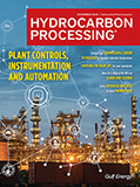Polymers
Braskem receives grant from REMADE for its polymer recycling technology
Braskem's polymer recycling technology research partnership has been awarded a $504,000 Research, Demonstration, and Development (RD&D) grant from the Reducing Embodied Energy and Decreasing Emissions (REMADE) Institute
Clariant’s catalyst chosen for Shenghong’s new world-scale biodegradable plastics project
Clariant announced that its SynDane 3142 LA catalyst will be used in Jiangsu Shenghong Petrochemical Co., Ltd's maleic anhydride production plant in Lianyungang, Jiangsu province, China.
A lifecycle assessment on chemically recycling plastics: A conversation with Neste’s Maiju Helin
Hydrocarbon Processing spoke with Maiju Helin, Head of Sustainability and Regulatory Transformation Renewable Polymers and Chemicals, Neste, regarding Neste’s lifecycle assessment report on chemically recycling waste plastic, including insights on the LCA study, the primary conclusions obtained from the report, the current state of Neste’s Project PULSE and the company’s future plans for waste plastic recycling.
The propylene production gap is an opportunity for integrated downstream players—Part 1
Among the challenges in the global crude oil refining industry are the price volatility of raw materials and the pressure from society to reduce environmental impacts, as well as reduced margins.
Editorial Comment: Celebrating the technologies and people in the global hydrocarbon processing industry
On October 11, Gulf Energy Information celebrated the inaugural Gulf Energy Information Excellence Awards.
Digital Feature: The perfect match: How to evaluate chemical resistance and fluid compatibility of materials
Matching the right elastomer to an application is key to ensuring an o-ring's optimal performance and mitigating premature failure.
Refineries’ pandemic turmoil—KNPC’s gasoline demand: Opportunities and challenges
The COVID-19 pandemic is regarded as one of the most exceedingly difficult challenges faced in the oil and gas industry's history.
Digital Technologies: A sustainable approach for digitalizing the petrochemical industry
In the petrochemical industry, business leaders are continuing to push for new approaches to optimize technology applications without disrupting their operational targets and key performance indicators.
Reimagining reliability analytics
The hypothesis that diversity among teams increases effectiveness is well-researched and published.<sup>1</sup>
Business Trends: The journey to sustainable profitability: How to benchmark the efficiency of your investment
Because it provides the energy and materials required for global development, the refining industry is critical to the world economy.

- NAPCOR releases 2024 PET recycling report highlighting system efficiency gains and continued strength of PET circularity 12/12
- OQ courts other partners for petrochemical complex in Oman as SABIC drops out 12/12
- Brazil's BNDES approves $71 MM for carbon storage project 12/12
- Cuba on edge as U.S. seizure of oil tanker puts supply at risk 12/12
- China oil demand to plateau between 2025 and 2030 12/12
- Germany's PCK refinery says no impact from pipeline leak 12/12




